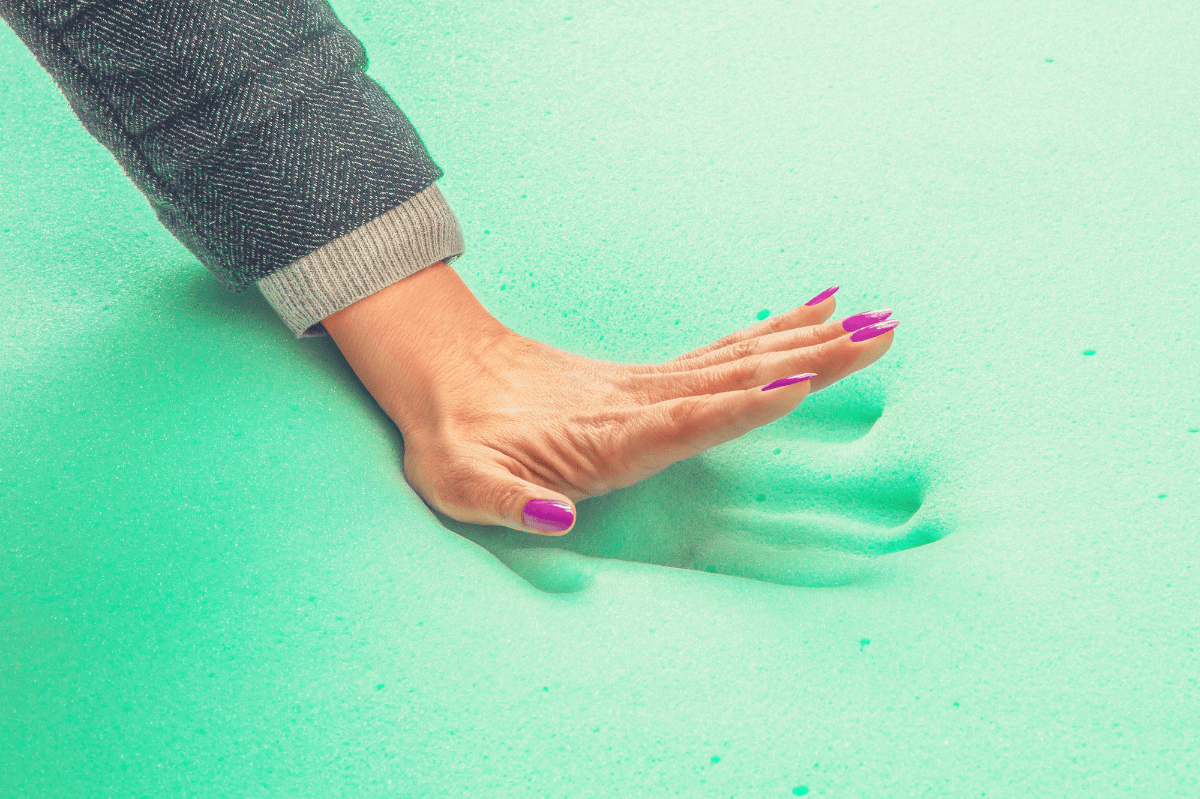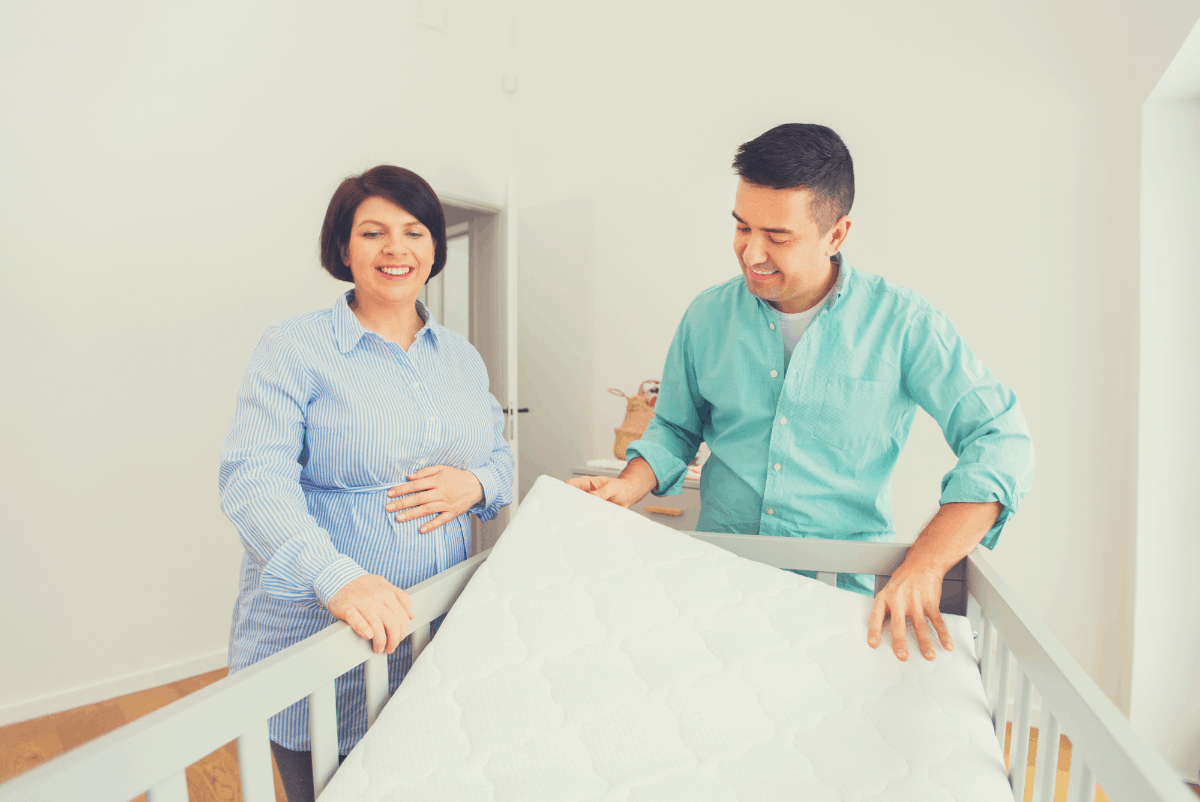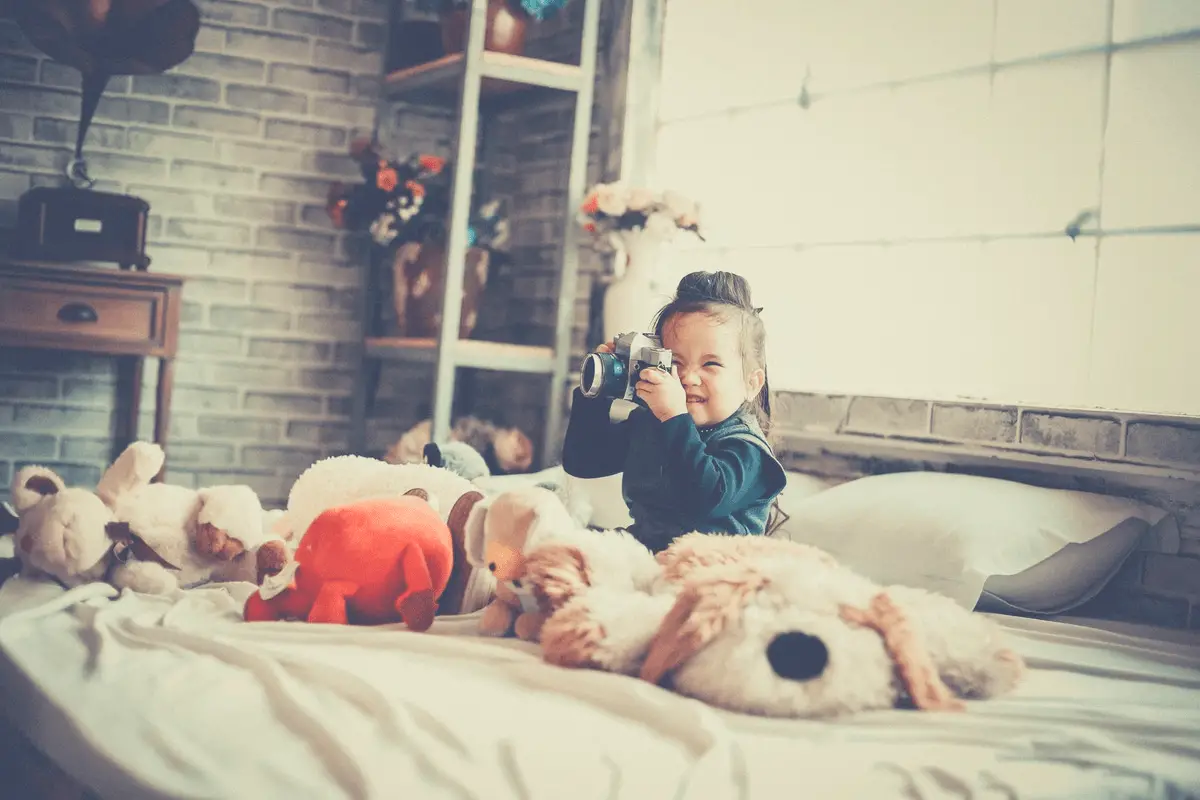All parents want maximum comfort for their children. If you’ve enjoyed wonderful nights on Memory Foam, it’s only logical that you’d want a similar experience for your sweet bundle of joy.
Toddlerhood can be crucial to a child’s development and health, especially during the night when they slip into their crib. Therefore, you should avoid as many mistakes as possible so as not to hinder the child’s growth.
Can toddlers sleep on memory foam mattresses?
The temperature-sensitive nature of memory foam, as well as its slow recovery and possible exposure to chemicals, can affect the comfort of toddlers. Therefore, memory foam is best introduced after toddlerhood when the child moves to their bed.
Why is Memory Foam not Safe For Toddlers?
Memory foam, as mentioned above, can be harmful to toddlers, although older children and adults usually enjoy sleeping on it. Shall we look in detail at a few of the reasons why toddlers should be kept away from this popular type of foam?
1. Memory foam has a slow recovery process – hard to change position
Memory foam is characterized by its natural slow recovery, which allows the body to sink into it during sleep. The result is customized pressure point relief for the body depending on your curves.
Whether you’ve piled on the pounds or have a slim body, memory foam’s natural sink-in can be the key to a comfortable night’s sleep all night long. Unfortunately, this feature means you have to work a little harder to toss and turn while you sleep.
While older children, teens, and adults have no trouble shifting from one position to another on memory foam, the situation can be different for toddlers. With their small body frame and limited strength, a 36-month-old baby or younger may feel too slumped to change positions when necessary.
This can lead to sleep disturbances that keep him or her awake all night and can also disrupt a parent’s sleep routine.
2. Memory foam mattresses are sensitive to sweat

Infants’ bodies typically sweat much faster than adults’. The majority of children who live in humid regions sweat most nights. Memory foam, however, is known for being the most temperature-sensitive material in the mattress industry.
This can lead to excessive discomfort when the toddler’s internal body heat comes into play in conjunction with the usually unforgiving room temperatures. A sweaty child will have a hard time sleeping, which means a higher likelihood of crying in the middle of the night or showing other signs of discomfort.
The latest generations of memory foam mattresses feature gel beads and other cooling technologies that can be very useful for toddlers. But you can’t always rely on manufacturers’ claims, can you?
3. Memory foam expose Toddlers to chemicals
Memory foam is a petroleum-based product that contains several chemicals during the manufacturing process. This can lead to the sleeper being exposed to everything from vinyl to phthalates to formaldehyde and other potentially harmful chemicals.
Exposing children to these chemicals can lead to a number of neurological problems that can affect their development. For young children who have been diagnosed with allergies and respiratory problems, breathing in such chemicals can also lead to respiratory problems.
In addition, memory foam mattresses require a period of outgassing when they are first delivered. This can take anywhere from 3 days to a couple of weeks. If a toddler is desperate to sleep in their bed, memory foam may not be the wisest option.
What are the Best Mattresses type For Toddlers?
Organic mattresses are the best mattress type for toddlers, according to doctors and sleep experts. These mattresses come in 3 main types, each offering benefits that can be heavenly for toddlers.
Shall we take a look at these options and what each one entails?
Organic Wool
Organic wool can be a great option for any parent who wants the best sleeping pad for their child. Natural wool offers excellent moisture wicking and will keep your adorable bundle of joy dry and comfortable all night long.
On chilly nights, wool can also provide a layer of insulation on your toddler’s body to help maintain warmth. Additionally, wool has natural flame retardant properties that can be a lifesaver in the event of a household fire.
Organic Cotton
Certified organic cotton mattresses are a popular choice in the industry. This material can also come in handy when making quilts and covers.
Cotton offers premium breathability by allowing air to circulate in and around the mattress with little effort. This means easy breathing and the most comfortable sweat-free nights, even for residents of humid regions.
Unlike polyurethane-based materials like memory foam, these mattresses feature GOTS-certified organic cotton. This means you won’t be exposed to potentially harmful chemicals that can make it difficult to breathe.
Natural Latex
Natural latex offers a normal mattress feel without the heat-sensitive properties of memory foam. This means amazing comfort even on hot nights when room temperatures can skyrocket.
In addition, latex provides superior comfort for children of all body types with a long-lasting effect that can trump other types of mattresses. Natural latex also offers hypoallergenic properties to ward off allergens, bacteria, dust mites and mold.
Amazon’s Naturepedic Organic Crib Mattress provides amazing comfort for toddlers all night long. It features 100% certified organic fabric and 150-coil high-performance interior batting for world-class support for your adorable baby. It is highly recommended.
How do you Choose A Mattress For A Child?
Choosing a mattress for a child can be difficult, especially as new parents. Often many of us tend to choose based on our own experiences, but this can be wrong as the needs of young children can be extremely different.
Here are the important considerations you should make during the search process.
1. The Size of the mattress
Choosing the right size can be one of the most confusing elements of buying a mattress for your child. Often, children are transitioned to cribs during toddlerhood and move to their first “real” beds at age 3.
Your child’s age should be taken into consideration when shopping, but your intentions can’t be completely ignored. Are you looking for a temporary crib mattress for a toddler so you can buy a bigger one later? Or do you want the toddler to move to a bigger bed right away?
For the latter option, a twin-sized bed might be the way to go. If you have more than one toddler, a twin mattress can accommodate both of them until they get older. Alternatively, you can order a full-sized bed if you have enough room for them.
A full-size bed should be large enough for 2 children to grow into adulthood.
2. Comfort Level of the mattress
Your child’s preferred sleeping position should be considered when buying a mattress. Generally, firm and medium firm mattresses are best for children who sleep on their back and stomach by default.
Side sleepers may need slightly softer models, and here pillowtop mattresses can be a good choice.
3. Material Type of the mattress

The type of material is another important feature to consider when buying a child’s mattress. Memory foam may not be a good option, but latex has solid properties that can enhance the comfort and support that children need.
Unfortunately, some latex models are made of synthetic materials that can expose children to potentially harmful chemicals. For this reason, a mattress made from natural latex is the best choice.
Sure, natural latex mattresses can be a bit more expensive than synthetic models, but the benefits and comfort for your child make them a worthwhile investment.
Keep in mind that innerspring mattresses can be too firm for a child’s comfort, especially for toddlers and those who are a bit older.
4. Durability of the mattress
It’s no secret that kids love to play on their beds, which is why choosing a durable model is so important. Children often soil their beds with food, drinks, dirt, and other unpleasant items that can lead to quick deterioration.
A durable model should be able to withstand this kind of abuse without suffering from significant wear and tear. A mattress protector can come in handy by protecting the mattress from stains and indentations.
This can further increase the life of the mattress while improving the comfort of the child’s sleep at night.
5. What is your budget?
An important step in the buying process is also how much you are willing to spend. The price of a child’s mattress can range from $100 to $1000 depending on the size and material of the components.
The most durable models tend to be more expensive, so keep that in mind when shopping, as it can be tempting to settle for cheaper options. Natural latex and organic models in particular can be significantly more expensive than coil innerspring and memory foam mattresses.
Conclusion
Memory foam mattresses can be unsafe for young children due to natural characteristics such as temperature sensitivity, slow reset, and the use of potentially dangerous chemicals in the manufacturing process.
Organic wool and natural latex are the best mattresses for toddlers and young children thanks to their built-in temperature regulation and use of eco-friendly manufacturing processes.
If you must choose memory foam, you can pad the mattress with a mattress protector made from organic wool, natural latex, or another natural material.
